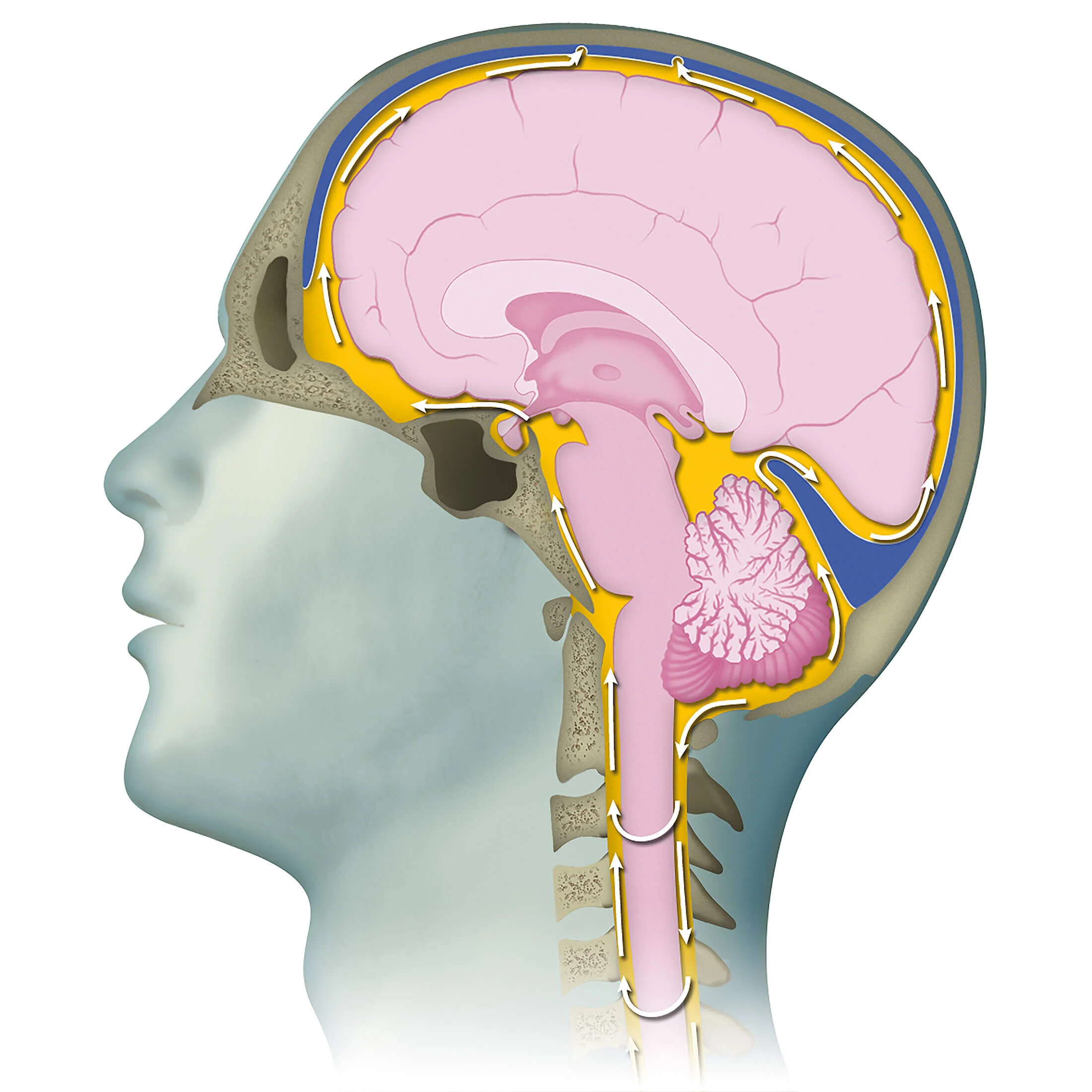
Cranial Osteopathy
Craniosacral Therapy
Biodynamic Therapy
Osteopathic Practitioners have learned to palpate a craniosacral rhythmic motion of approximately eight to twelve cycles per minute. This movement is present throughout life and can be felt anywhere in the body. It is believed to be caused by the production and re-absorption of cerebrospinal fluid (CSF) and other fluids in the brain and spinal cord. The presence of the craniosacral rhythm is a normal sign of health and vitality. An Osteopathic Physician, Dr. John Upledger, coined the term “craniosacral therapy” to describe some of the work originally known as cranial osteopathy. These terms are used interchangeably here.
Cerebrospinal Fluid (CSF)
Cerebrospinal fluid (CSF) is contained within the dura, which surrounds the brain, spinal cord and attaches all the way down to the sacrum and tailbone. Cerebrospinal fluid is formed and absorbed across the walls of the blood capillaries in the brain, the ventricles and the lymphatic system. The tiny blood vessels in the brain play an essential role in regulating the volume of fluids in the brain and spinal cord. The tension created in the dura at one end is transmitted all along the spinal cord to the sacrum at the other end.
Glymphatic system: Lymphatic vessels have been identified in the dura, around the pituitary gland, around the eye, the nasal mucosa and the middle ear. They have also been found in most cranial nerves and spinal nerves. Toxic waste products of inflammation, toxicity, and by-products of normal nerve activity is addressed by the glia – the cells that once were thought of as the glue that held the nerves in place. These products are then removed from the brain by the brain lymphatics or glymphatic system into the lymphatic system in the neck.
Why Do We Work With The Craniosacral Rhythm?
Circulation of blood around the brain, and CSF within the dura nourishes all nerve tissue in the brain and spinal cord. Craniosacral techniques help boost the circulation and drainage of fluids. Working the lymphatic system boosts the immune system.
The gentle rocking motion moves fluids and releases nerve tensions along the spine, and releases strain patterns anywhere in the body.
Inflammation, trauma, infection, epidurals, toxicity, viruses and illness can interfere with the craniosacral rhythm.
Craniosacral therapy can have a profound calming effect on the nervous system, balancing the autonomic nervous system, and settling the reticular alarm system in the face of ongoing stress. Cranial Osteopathy is one of the gems of osteopathic treatment. What sets Osteopathic Practitioners apart is our ability to work with the nuances of the nervous system and the effects are felt profoundly.



